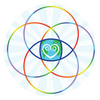

WELLthier Living and Aging

WELLthier Living and Aging
Alternatives to Testosterone Replacement Treatments
Testosterone replacement treatments are a growing market, accounting for $2 billion in sales for pharmaceutical companies in 2013 alone. However, the vast majority of men supplementing testosterone (80–85%) discontinue treatment after a year.
Pharmaceutical testosterone therapy has been associated with a range of side effects, including reduced fertility, fluid retention, and obstructive sleep apnea, and its long-term safety and efficacy is unknown. However, lifestyle changes and nutritional interventions may offer a nonpharmaceutical alternative for men with suboptimal testosterone levels.
The healthy range for serum testosterone levels for men under age 50 is between 300–1000 ng/dl. The American Urological Association guidelines state that testosterone therapy can be considered if serum levels of testosterone are under 300 ng/dl and clinical symptoms are present. Low testosterone may indicate the presence of an underlying comorbidity such as hypertension or type 2 diabetes.
Lifestyle interventions have been shown to improve testosterone levels without the aid of drugs. Exercise, such as high-intensity interval training, increases free testosterone in older, sedentary men as well as in master athletes. Reducing alcohol intake also increases free testosterone.
Nutritional interventions may also be considered. One such intervention includes increasing a range of foods and vitamins that naturally inhibit aromatase. Aromatase inhibitors decrease the conversion of testosterone into estradiol, resulting in increased testosterone levels. In one large trial, aromatase inhibitors significantly increased testosterone—and significantly reduced abdominal fat, an effect not seen in the group being treated with testosterone supplementation.
REFERENCES
The Institute for Functional Medicine. (n.d.) Testosterone treatments: Beyond replacement. Retrieved from https://www.ifm.org/news-insights/testosterone-supplement/


 By
By







